Artisanal and small-scale gold mining (ASGM) makes up near 20% of the world’s gold.
Women are an important part of the sector. However, they often face a host of challenges, including gender-based violence, denied access to assets and significant risks to health.
Ahead of International Women’s Day on the 8th of March, we sat down with Grace Halla from the United Nations Environment Programme’s (UNEP) Chemicals and Waste Unit to discuss how UNEP’s Global Environment Facility-supported planetGOLD programme mainstreams gender within its activities.
Women make up a significant part of the ASGM sector. Has that always been the case?
Yes – ASGM often occurs in rural settings where the whole community is involved. Women traditionally crush rocks, wash ore, otherwise known as sluicing, and extract gold though a process called mercury amalgamation. In many countries, women also record gold production and arrange transport services and logistics. So, their participation is very common.
What challenges do women miners face?
Women are frequently treated as a minority group within the ASGM community. It varies from country to country but broadly their rights, as well as their access to profits, are restricted due to gendered power imbalances, they’re more vulnerable to violence and abuse, and they have to balance work with family life, responsible for domestic tasks such as cooking, cleaning and childcare. In more extreme situations, women are even banned from entering mining sites; and given ASGM is mainly informal, there is limited scope legally to prevent this.
Why is using mercury to mine gold particularly dangerous for women?
Women are typically responsible for the most toxic part of the mining process: mercury amalgamation. This involves women handling mercury without protective equipment and risks exposure to toxic fumes damaging the lungs, kidneys, nervous system (including the brain, spinal cord and nerves), vision, hearing and fertility. If pregnant, mercury can also cause complications and lead to developmental problems in infants. Once in the body, metallic mercury can stay for weeks or months.
Can you describe planetGOLD’s work and how it’s helping women miners?
The programme influences policy, infrastructure, access to finance and equipment, gold trading and builds capacity amongst other actions to tackle the issues I referred to. All the projects under planetGOLD programme have a gender strategy designed for the national context and gender specific indicators are used to track progress. Numerous gender related workshops have been conducted to raise awareness and promote the empowerment of women in ASGM. The programme will continue to do so and bring transformational change for women miners.
The planetGOLD programme has been active for over four years. What have we learned during this time?
Prior to the programme, the role of women in ASGM wasn’t a focus, either in policy or amongst mining communities. We knew that women played a key role within the sector, not only as miners but as caregivers, and that they were traditionally marginalized. As such, planetGOLD has less provided new insights into the life of women within ASGM but rather underlined the importance of intentionally including gender within programme design.
A good example concerns the introduction of new technology; machinery that crushes the ore and eliminates the need to process using mercury. Without the need for mercury amalgamation, women are worried their roles will become obsolete, even when they are aware of the health implications. The programme, therefore, either trains women to assume a new role in mercury-free processing systems or provides access to alternative sources of livelihood, ensuring they are not left out in the cold. Gender cannot be secondary to have an impact on rights, profits and finance.
To learn more about planetGOLD and UNEP’s Global Environment Facility-supported work in Chemicals and Waste, contact Ludovic Bernaudat.




